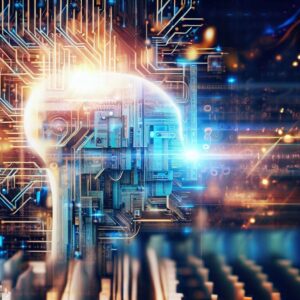Understanding Business Intelligence
Business intelligence (BI) is an integral part of today’s data-driven business environment. It acts as a catalyst that helps to convert raw data into valuable insights. This term collectively refers to the methodologies, systems, strategies, and technologies that gather, manage, analyze, and present data in a structured and meaningful way.

BI tools include hardware and software solutions that can collect, store, and retrieve vast amounts of unstructured and structured data from different sources such as databases, management systems, and social media sites. These tools can organize and analyze the extracted data, transforming it into actionable information.
BI presents historical, current, and predictive views of business operations. The historical view allows businesses to understand past trends while the current view helps monitor the performance in real-time. Meanwhile, the predictive view enables forecasts about possible future outcomes based on the historical and current data.
In strategic planning, BI plays a pivotal role. It presents data insights in intuitive ways such as charts, graphs, and maps, which help in comprehending complex business concepts and strategies. With BI reports, businesses can make informed decisions and better strategic plans. BI helps in identifying business strengths, weaknesses, opportunities, and threats, leading to well-informed decisions.
Business Intelligence also helps businesses operate more effectively. It uncovers inefficiencies, identifies bottlenecks, and provides insights into areas needing improvement, playing a crucial role in the optimization of business processes.
BI is not just a tool but a catalyst driving the growth, success, and sustainability of modern businesses. Irrespective of their size or sector, businesses can leverage BI to transform their raw data into strategic assets that can provide a competitive advantage.
The role of BI is not limited to data management and analysis; it provides businesses with the roadmap to understand the market and their business better. With BI, businesses can respond quickly to market changes, understand consumer behavior, predict future trends, and make data-driven decisions which all lead to increased growth and success.
Role of Machine Learning in Business Intelligence
Machine learning, a trailblazer in the digital world and a key subset of artificial intelligence, has become a force to be reckoned with in the field of business intelligence (BI). By employing algorithms and computational models that make predictions or decisions without explicit programming, machine learning has the potential to revolutionize the insights that BI can provide.
Machine learning enhances BI capabilities significantly. Traditional BI analyzes historical and current data to generate insights manually, while machine learning automates this process, saving time and increasing efficiency. Machine learning algorithms can examine vast amounts of data, discovering patterns and trends that might not be visible to the human eye. The predictions made by these algorithms help businesses anticipate future events concerning market trends, customer behavior, and operational efficiency, amongst others.
For instance, the use of machine learning in predictive analytics, a type of BI, can enable businesses to extrapolate current data trends into the future, thereby predicting future outcomes. In prescriptive analytics, Machine learning can suggest actions businesses may take to affect those outcomes.
Machine learning algorithms learn from new information and automatically adapt to changes, allowing businesses to gain more accurate insights from their data over time. With these constantly updating and improving algorithms, decisions made from these insights become more efficient and precise.
Keras and TensorFlow are two invaluable machine learning libraries that have strengthened the bond between machine learning and BI. Keras is a high-level neural networks API, written in Python, and capable of running on top of TensorFlow, CNTK, or Theano. TensorFlow, on the other hand, is an open-source software library for dataflow and differentiable programming across a range of tasks, developed by Google.
These two libraries are instrumental in improving the capabilities of BI in various sectors. Industries such as healthcare, finance, retail, and logistics have taken advantage of Keras and TensorFlow to build models that aid in decision-making, improve operations, and enhance the customer experience.
The integration of machine learning, particularly through libraries like Keras and TensorFlow, has greatly enhanced business intelligence. By enabling automated analytical model building and offering useful insights about future possibilities, machine learning helps companies refine their business strategies, increase operational efficiency, improve the customer experience, and ultimately drive growth and profitability.
Deep Dive into Keras and TensorFlow
Keras, a high-level neural network API, operates on top of TensorFlow, making it more user-friendly and simplifying the process of building and training neural networks. TensorFlow, developed by Google Brain, is a robust library for large-scale numerical computation and supports a wide array of complex computations. Both tools have distinct yet complementary features and offer powerful platforms for creating ML models. You can read more about Keras in our previous article .
Application of Keras and TensorFlow in Business Intelligence
Keras and TensorFlow are highly valuable tools in the realm of business intelligence, especially in predictive analytics and customer segmentation.

Predictive analytics involves extracting information from existing data sets with the objective to predict future trends and patterns. Keras and TensorFlow, with their advanced functionalities, make it easier to create accurate predictive models. For example, a business can use these tools to analyze historical sales data and predict future demand. Similarly, these tools can analyze customer behavior patterns to predict future purchasing trends or even identify potential customer churn. The robustness of TensorFlow in handling multiple datasets further bolsters this predictive analysis by employing sophisticated computations and transformations on complex data, thereby, enabling businesses to glean more nuanced predictions.
In the realm of customer segmentation, Keras and TensorFlow play a vital role too. Businesses can analyze vast amounts of customer data, parsing through variables such as past purchasing history, browsing behavior, and demographic information, to segment their customers into distinct groups. Once these segments are identified, businesses can tailor their marketing strategies to target each group effectively, enhancing both customer engagement and return on marketing investment.
A great example of this is the music streaming service, Spotify. They utilize TensorFlow to analyze user behavior and create personalized playlists and recommendations. Spotify’s underlying algorithm learns from each user’s listening habits, likes, and dislikes to provide an individualized recommendation service. With each interaction, the machine learning model learns and adjusts, continually improving its recommendations and enhancing the overall customer experience.
Keras and TensorFlow are also instrumental in the finance sector. Banks can use these tools to create models that predict the probability of loan defaults, thus aiding in risk management strategies. Similarly, investment and insurance companies can leverage these tools to predict market trends or customer behaviors, enabling them to make more informed and profitable decisions.
Keras and TensorFlow significantly amplify BI’s capabilities, revolutionizing predictive analytics, customer segmentation, personalized recommendation systems and risk management, to mention a few applications. They essentially reformulate the way businesses operate and make decisions, driving growth, profitability, and overall success.
Incorporating Keras and TensorFlow into BI can lead to improved decision-making. They enable businesses to discover hidden insights within their data, leading to better understanding and strategic decisions. Businesses can also benefit from increased efficiency and cost savings. They can automate routine tasks, identify bottlenecks, and uncover opportunities for cost savings.
Future Trends
Looking at the future, the implementation of AI and machine learning via tools like Keras and TensorFlow in the realm of business intelligence is a trend that is set to escalate. This transformation is being driven by an exponential increase in data volumes. Companies that can adequately harness and make use of this data will have a significant competitive edge in their respective markets.
The growing use of AI and machine learning in business intelligence stands to revolutionize business operations, strategies, and decision-making. For instance, real-time data processing and insights will play an increasingly significant role in business operations. The ability to analyze and act upon data in real-time, facilitated by tools such as Keras and TensorFlow, can lead to improved operational efficiency and more swift business decisions.
Automated machine learning (AutoML) presents another exciting trend for the future. AutoML platforms use machine learning algorithms to automate the end-to-end process of applying machine learning to real-world problems. With this, businesses can simplify the process of creating and implementing machine learning models, making advanced analytics accessible to non-experts and improving efficiency.
Advancements in Natural Language Processing (NLP), a technology that allows machines to understand and interpret human language, will also influence future trends in business intelligence. As NLP becomes more sophisticated, businesses will have more advanced tools at their disposal to analyze unstructured data like customer reviews, feedback surveys, and social media comments. This will open up new avenues for gaining insights into customer sentiment and behavior.
The role of AI Ethics and Privacy is increasingly significant, and businesses will need to focus on deploying machine learning models that are not only efficient but also transparent and unbiased.